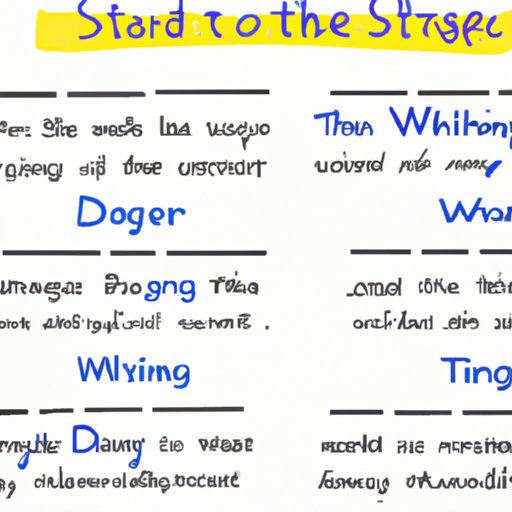Introduction
Teaching writing to 1st graders can be a daunting task. After all, these young learners are still learning how to read and write. As their teacher, it’s important to provide them with the necessary tools and strategies to help them succeed. This article will cover some tips and strategies for teaching writing to 1st graders.

Definition of 1st Grade Writing
When teaching writing to 1st graders, it’s important to first understand what is expected of them. Generally speaking, 1st grade writing involves basic sentence structure, simple word choice, basic punctuation, and the ability to express ideas in written form. While 1st graders may not be expected to write long essays or stories, they should have the skills to write short sentences and paragraphs.
Overview of Challenges in Teaching Writing
When it comes to teaching writing to 1st graders, there are some unique challenges. For one, many 1st graders are still developing their reading and writing skills. Additionally, many 1st graders struggle with spelling, grammar, and punctuation. Finally, many 1st graders lack the motivation or interest to write. As their teacher, it’s important to find ways to engage and motivate them.
Incorporate Hands-on Activities
One of the best ways to engage 1st graders in writing is to incorporate hands-on activities. For example, you could have them write in sand or shaving cream. This is a fun activity that allows them to practice their writing skills without having to worry about making mistakes. Additionally, you could use visuals to help them better understand concepts such as grammar, spelling, and punctuation. Visuals such as pictures, diagrams, and charts can make abstract concepts more concrete.
Provide One-on-One Instruction and Feedback
Another important part of teaching writing to 1st graders is providing them with individual attention and feedback. This is especially important for those who are struggling with writing. By providing one-on-one instruction, you can help them identify areas of weakness and then work on improving those skills. Additionally, providing one-on-one feedback can help them better understand what is expected of them and give them the confidence to continue writing.

Utilize a Variety of Writing Formats
When teaching writing to 1st graders, it’s important to utilize a variety of writing formats. Stories, poems, letters, and other types of writing can help keep students engaged and motivated. Additionally, using different formats can help them develop their writing skills in different ways. For example, stories can help them learn how to create characters and plotlines, while poems can help them learn how to use words in creative ways.
Allow Students to Write About Topics They’re Interested In
One way to keep 1st graders motivated is to allow them to write about topics they’re interested in. This could include anything from sports to animals to their favorite TV shows. By giving them the freedom to choose their own topics, you can help them build their confidence and enthusiasm for writing. Additionally, you can use interest-based lessons to further engage them in the writing process.
Play Writing Games
Writing games can also be a great way to get 1st graders excited about writing. Story starters, mad libs, and other writing games can help students practice their writing skills in a fun and engaging way. Additionally, these games can help them learn how to come up with creative ideas and develop their imagination.
Encourage Reading
Finally, reading is an important part of teaching writing to 1st graders. Reading helps to improve vocabulary, grammar, and writing style. Additionally, reading exposes students to different styles of writing which can help them develop their own writing skills. When selecting books to read, try to choose ones that are age-appropriate and interesting to your students.
Conclusion
Teaching writing to 1st graders can be challenging, but with the right strategies, it can be a rewarding experience. Incorporating hands-on activities, providing one-on-one instruction and feedback, utilizing a variety of writing formats, allowing students to write about topics they’re interested in, playing writing games, and encouraging reading are all effective strategies for teaching writing to 1st graders. With these tips and strategies, you can help your students become confident and successful writers.
(Note: Is this article not meeting your expectations? Do you have knowledge or insights to share? Unlock new opportunities and expand your reach by joining our authors team. Click Registration to join us and share your expertise with our readers.)
